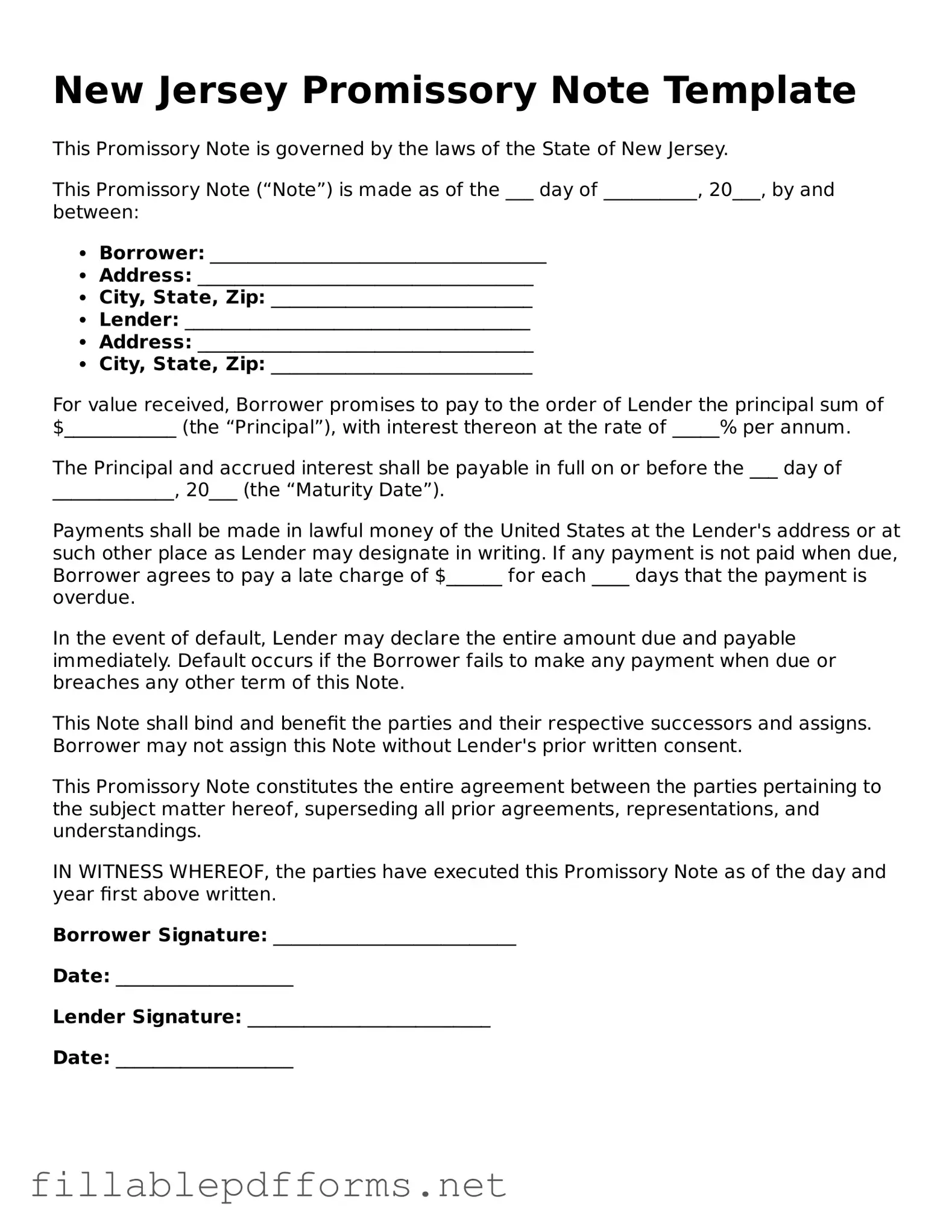Attorney-Verified Promissory Note Form for New Jersey State
A New Jersey Promissory Note is a written promise where one party agrees to pay a specific amount of money to another party at a designated time or on demand. This legal document outlines the terms of the loan, including the interest rate and repayment schedule. Understanding this form is essential for both lenders and borrowers to ensure clarity and enforceability of the agreement.
Launch Editor Here
